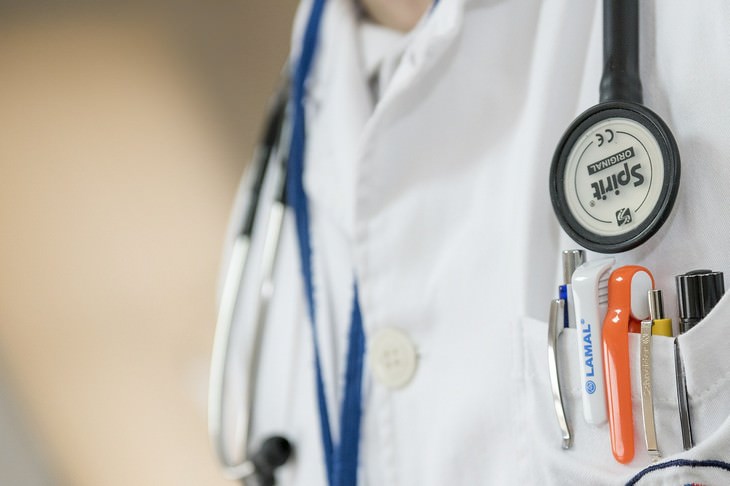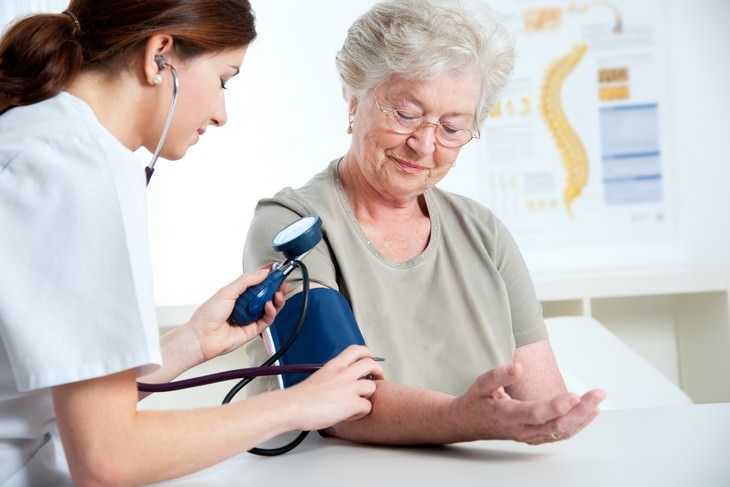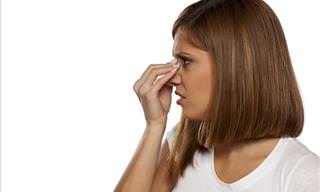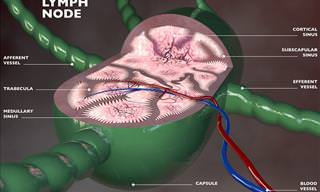It's a midlife fact: once we've hit our fifties, we are more likely to need certain medical tests and exams to maintain our health. While this can be unsettling, knowing what tests are available to us can help us make better-informed health decisions. Here is a list of tests you should consider doing once you've reached your fifties:
Routine Yearly Physical Exam
Whether you are seeing a gynecologist or a family doctor for your routine checkup, it's important to know exactly what tests you need and what to expect. Routine physical checkups take time, so book your appointment in advance, making it clear that you are coming for a complete physical. If seeing your family doctor, it's best to stick with a general physical exam, screening for chronic conditions such as heart disease and cancer. On the other hand, see your gynecologist for gynecological exams.
The following tests and exams get the best snapshot of your overall health:
1. General Physical Exam
A general physical includes your doctor taking a detailed history to learn all about you and your family history. A head-to-toe physical exam includes your skin, eyes, ears, nose, throat, lymph nodes, chest, breast area, abdomen, rectum, and extremities (hands and feet).
2. Waist Circumference
A larger waist circumference could put you at an increased risk of metabolic syndrome, which in turn can cause a cluster of medical conditions including high blood pressure, high blood sugar, abnormal cholesterol or triglyceride levels, which can increase your chances of heart disease, stroke, and diabetes. Among women, an increased waist circumference can also put you at risk of breast and uterus cancer.
3. BMI (Body Mass Index)
Your BMI is another indicator of possible future health risks. However, your waist circumference and body shape make for a more reliable estimate.
4. Blood Pressure
Once you've reached 50, your blood pressure should be tested at each visit to the doctor. According to treatment guidelines, if you have diabetes, your blood pressure target should be around 120/80.
5. Pelvic Exam
Your yearly visit to the gynecologist usually entails a pelvic exam. If you rely on your family doctor, you will most likely have to ask for this to be performed. A pelvic exam can determine the condition of your uterus, cervix, ovaries, and rectum. You should also ask for a rectal exam, as well as for a stool sample to be taken to test for the presence of blood. A regular pap smear will also examine your cervical cells, determining any changes or the possibility of cervical cancer.
Along with your pap smear, you should also ask for the HPV (Human Papilloma Virus) test. Testing positive for HPV could mean that you are a chronic carrier of the virus, which is believed to be the sole cause of cervical cancer. Consequently, additional tests for any abnormal cells caused by the virus can then be carried out.
6. Blood Work
Your blood record contains a great deal of information about your health. By the time you hit your forties, it's important to run a complete series of blood tests. Doing so will allow you to find out about the state of your liver, thyroid, blood cholesterol, blood sugar and more. An overnight fast or fasting sample is critical. The following is an overview of what your doctor will test:
• Complete Blood Count: CBC measures the number, size, and shape of the different types of cells in your blood. It may be ordered as part of a complete physical examination, before surgery or if you have unexplained symptoms.
• C-reactive Protein: Women with a waist circumference of 35 inches or over should ask for this important test to determine blood inflammation and risk of heart disease.
7. Blood Chemistry
The state of your blood chemistry can be determined by a series of tests that can be conducted quickly and inexpensively. Here's what your doctor will test:
• Glucose: This test will determine whether you have diabetes. A fasting glucose of less than 100 is normal, while a level of 100 to 125 is abnormal and called impaired glucose tolerance. Meanwhile, a level of 126 or greater indicates diabetes.
• Blood Urea Nitrogen and Chloride: This tests your kidney function.
• Sodium, Potassium, and Chloride: These are your blood salts or electrolytes. This test is especially important if you are taking diuretics (water pills) for hypertension or heart disease.
• Uric Acid: Determines the waste product of all cells. If elevated, it may indicate kidney disease or gout.
• Albumin: A blood protein produced by the liver. If low, it can indicate liver or kidney disease.
• Globulin: A blood protein produced by your immune system. A high count can indicate chronic inflammation, infection or blood disorders such as multiple myeloma.
• Calcium: A component of your blood that helps all the cells in your body function normally. A high count in your blood can point to hyperparathyroidism, which predisposes you to kidney stones and low bone density.
• Serum Glutamine Pyruvic Transaminase (SGPT) and Serum Glutamate Oxaloacetate Transaminase (SGOT): Determines the enzymes (proteins) produced by the liver and red blood cells.
• Lactate Dehydrogenase: This enzyme is produced by many cells in the body. If high, your doctor will likely do additional tests to rule out malignancy.
• Bilirubin: A chemical in bile that gives it its yellow color. If high, the bile passages from the liver to the intestine are blocked, indicating gallstones or liver disease.
• Gamma Glutamyl Transpeptidase (GGT): An enzyme produced by the liver. Obesity and excessive alcohol use are the most common factors for a GGT increase. It may also be elevated due to liver disease.
• Alkaline Phosphatase: An enzyme produced by the liver and bones. If elevated, determining the levels of GGT may help understand why - in which case, if both GGT and Alkaline Phosphate are high, the liver is likely to be the reason.
8. Blood fats and lipids
The levels of your blood fats and lipids determine whether heart disease is present. This is generally what your doctor should test for:
• Total Cholesterol: This determines the sum of your LDL and HDL (more on this below). High total cholesterol levels are linked to heart disease. Your total cholesterol level should be below 200.
• High-Density Lipoprotein (HDL): HDL indicated your good cholesterol levels. Your HDL should be at least 30 percent of your total amount. In men, an HDL greater than 40 is normal, while in women, an HDL greater than 50 is normal.
• Low-Density Lipoprotein (LDL): LDL determines your bad cholesterol levels. If your LDL is high, it puts you at risk for heart disease. Your doctor will likely recommend a change in diet and medication to get your LDL cholesterol below 130. If you suffer from diabetes or heart disease, your treatment goal for LDL should be below 100.
• Triglycerides: This determines the form of fat in your blood. Your triglyceride levels are much more likely to be higher after a meal. Elevated levels indicate an increased risk of heart disease and could also be a sign of early diabetes. Your triglyceride levels should ideally be under 150.
9. Thyroid Function
Women over the age of 50 should be tested for an under-active thyroid. A thyroid function test measures the level of the two hormones produced by the thyroid glands: thyroxine 3 (T3) and thyroxine 4 (T4), both of which regulate your metabolism. If your thyroid hormone levels are low, the TSH (Thyroid Stimulating Hormone) level will be high, whereas if the thyroid hormone levels are too high, then the TSH will be low or immeasurable.
10. Bone Density
An x-ray, known as the DXA scan, measures your bone density. The lower your bone density, the greater your risk for bone fractures. The most important score detected by a DXA scan is your T-score, which indicates how well your bones compare to that of a healthy 35-year-old-woman. If it falls between -1 and -2.5, you likely have mild protein and mineral loss in your bones, called osteopenia. If your T-score is -2.5 or lower, then you have osteoporosis and thus are exposed to a significantly increased risk of fractures.
11. Mammogram
This X-ray can detect breast cancer early, often before a lump can be felt. It is ideally scheduled a week after your period, a time when your breasts are least tender and glandular. Women over 50 should take this test yearly, while women at high risk of breast cancer should ask about a digital mammogram and an MRI.
12. Colon Cancer Screening
Once you've hit 50, talk to your doctor about a colon cancer screening. If colon cancer, colon polyps, inflammatory bowel disease or other cancers such as breast, ovarian, endometrial or prostate cancer run in your family, it is important to get screened. Have an annual rectal exam and check the stool for hidden blood once a year. Get a colonoscopy done once at age 50, then depending on your family history, once every 5 to 10 years.
13. Dental
Every six months, get your teeth and gums checked for decay or plaque buildup as well as signs of inflammation and infection, particularly if you are at risk for heart disease, metabolic syndrome or diabetes, or if you have a waist circumference over 35 inches.
14. Vision
Getting your eyes checked on a regular basis can determine your vision, cataracts, and even glaucoma. If you suffer from metabolic syndrome or diabetes, you should have an annual ophthalmology exam done by an ophthalmologist, to check the retina too.
15. Skin Examination
Ask your doctor for a head to toe check of your skin on an annual basis. Melanoma is one of the most serious forms of skin cancer, that arises due to excessive sun exposure.
16. ECG (Electrocardiogram)
A baseline ECG assesses your heart's electrical activity. Be sure to get this test done by age 50, particularly if you are at increased risk for heart disease. For an accurate picture of your heart ask for a CT scan, a stress test which uses a heart ultrasound or special dye to get more accurate pictures of your heart. It may be a good idea to ask your doctor for a printout on a copy machine, which you carry with you along with your emergency health card.
In case an emergency crops up in the future, your doctors will be able to compare a new ECG with your old one, enabling them to determine how best to treat you.
17. Prostate Cancer Screening
Once you've hit your 50s, it is important to discuss screening for prostate cancer with your doctor. If you have a family history of prostate cancer among first degree relatives, you should discuss screening at age 45.
In Summary
You know you are healthy at 50-60 if you have:
• Waist circumference under 35 inches
• Blood pressure <120/80
• Blood lipids: LDL cholesterol <100, HDL > 50, TG (triglycerides) <150
• Fasting blood glucose <100
• ECG: baseline and CRP blood test if WC over 35 inches
• Sleep 7-8 hours at night
• Eat fruits, veggies, grains and healthy fats
• Don’t smoke
• Reduce stress in your life
• <1 glass wine daily
• Exercise/walk 30 minutes or more daily.
Source
 Go to BabaMail
Go to BabaMail


 Image courtesy of
Image courtesy of 
 Image courtesy of
Image courtesy of  Image courtesy of
Image courtesy of  Image courtesy of
Image courtesy of 















































